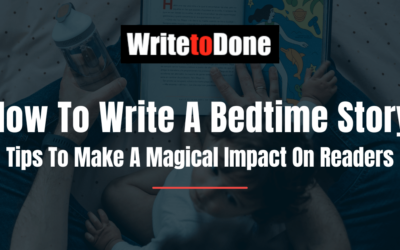Imagine a place where you could easily improve your writing by publishing 30, 40 or 50 blog posts a day.
In this place, you’d automatically receive individual feedback for each blog post on whether it touched base with your readers.
You’d be sure that every one of your blog posts would be read, and some of them would be widely shared.
Each blog post you write in this place improves your writing.
Such a place exists and, chances are, you already hang out there.
Twitter launched in 2006, at the dawn of the golden age of blogging. Nowadays, it’s known as a social network, but back then Twitter was a microblogging service. Twitter made sense to bloggers because, in simple terms, it was a blogging platform where blog posts had to be squeezed into 140 characters.
Twitter is a blogging platform and a place to improve your writing skills.
As a writer, you can use Twitter for all of the following.
1. Practice your writing.
Twitter is a writer’s sandbox. You can be creative, try out new things, see what works and what doesn’t. Because each update is so tiny and transient, your mistakes are quickly forgotten. But when you do something that resonates with your readers, it can reach thousands or hundreds of thousands of people in a matter of minutes.
Some writers use Twitter to share micropoems. (Check out these 100 little Twitter poems, or search Twitter for the #sixwords hashtag). Others use it to tell stories from their day or promote their work.
2. Network with other writers
Twitter is known as a social network because it’s fantastic for networking. You can use it to talk directly with all kinds of writers from established old school writers (Neil Gaiman, Paulo Coelho, Alain de Botton) to successful self published writers (Sean Platt, Joanna Penn, Ali Luke) to superstar bloggers (Jeff Goins, Danny Iny, Mary Jaksch).
Perhaps most important of all are the thousands of all-around friendly writers and editors who are still on the journey and are happy to chat, ask for feedback on their writing, and give feedback on yours. Some of my favorites are John Wiswell, Amanda Socci and Jackie Pearce.
As you network with other writers, you’ll discover writing tips, new writing challenges, and writing communities where you’ll feel right at home.
3. Keep your writing concise
“Eliminate the non-essential” is Write to Done’s advice on keeping your writing concise.
Twitter gives you only 140 characters to play with, so it squeezes the excess pith from your words, leaving only the nourishing juice. You’re forced to write concisely, to discard the ore and share only the gold.
4. Track your results
I know many writers prefer the romance of poetry and stories to the hard, concrete facts of numbers and raw data.
Yet to succeed as a professional writer, you must take a keen interest in numbers. How many dollars you’re earning. How many books you’ve sold. How many readers are subscribed to your blog.
Twitter allows you to track the success of your writing in hard numbers. You can see whether your follower count is growing, whether your tweets are being shared, and (using simple web apps such as Buffer) whether people are clicking the links you share.
If your follower count is flat-lining and your links aren’t being clicked, that’s useful feedback, and you can start to do things differently.
5. Find out what your readers want
One way of attracting more readers is knowing what your readers want. The simplest way to do this is to ask them, and Twitter provides the perfect platform to fire out questions to your readers.
Also, take note which tweets are most popular with your followers – either through retweets, replies, or clicking the link you shared. When readers share or reply to your tweets, they’re saying “More like this, please”.
6. Learn what entices
In the web age, writing is copywriting. And copywriting means attracting attention.
Twitter, with its built-in systems for tracking results, is ideal for learning what gets attention and what gets ignored. In particular, you can use Twitter to practice writing headlines that get the most clicks. The better you are at writing neck snapping headlines, the more readers you’ll attract to your blog posts, ebooks, and articles.
7. Improve your writing with creative inspiration and ideas
Twitter is a playground of ideas. Everywhere you look, you’ll find ideas for stories to tell, research to pursue, and people you could interview for your next article.
Whenever you feel stuck for writing ideas, turn to Twitter. In just a few minutes you’ll find an idea or story angle that excites you and you want to pursue.
So what are you waiting for? If you’ve yet to sign up to Twitter, or you’ve allowed your Twitter account to fade away into zombie status, get started today!
About the author:
David Masters teaches you how to buzz up your social media soul at Social Caffeine. Come on over and join the party.


















